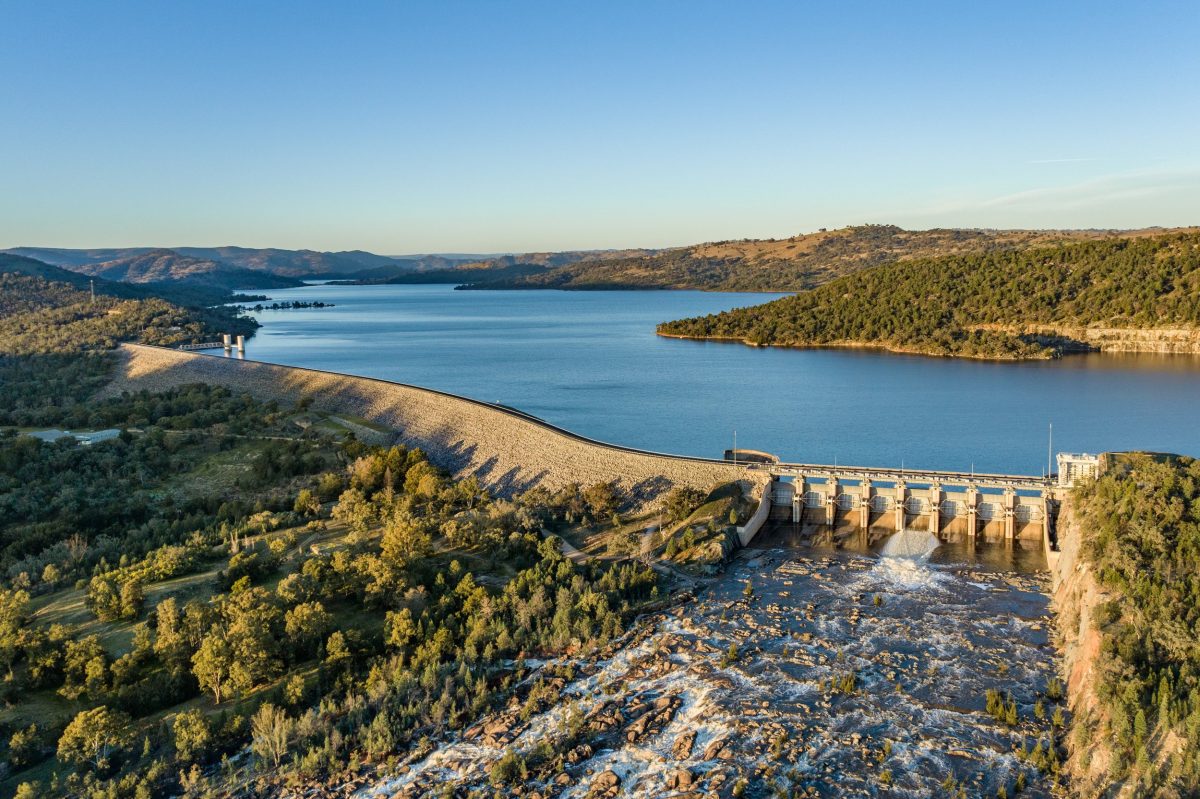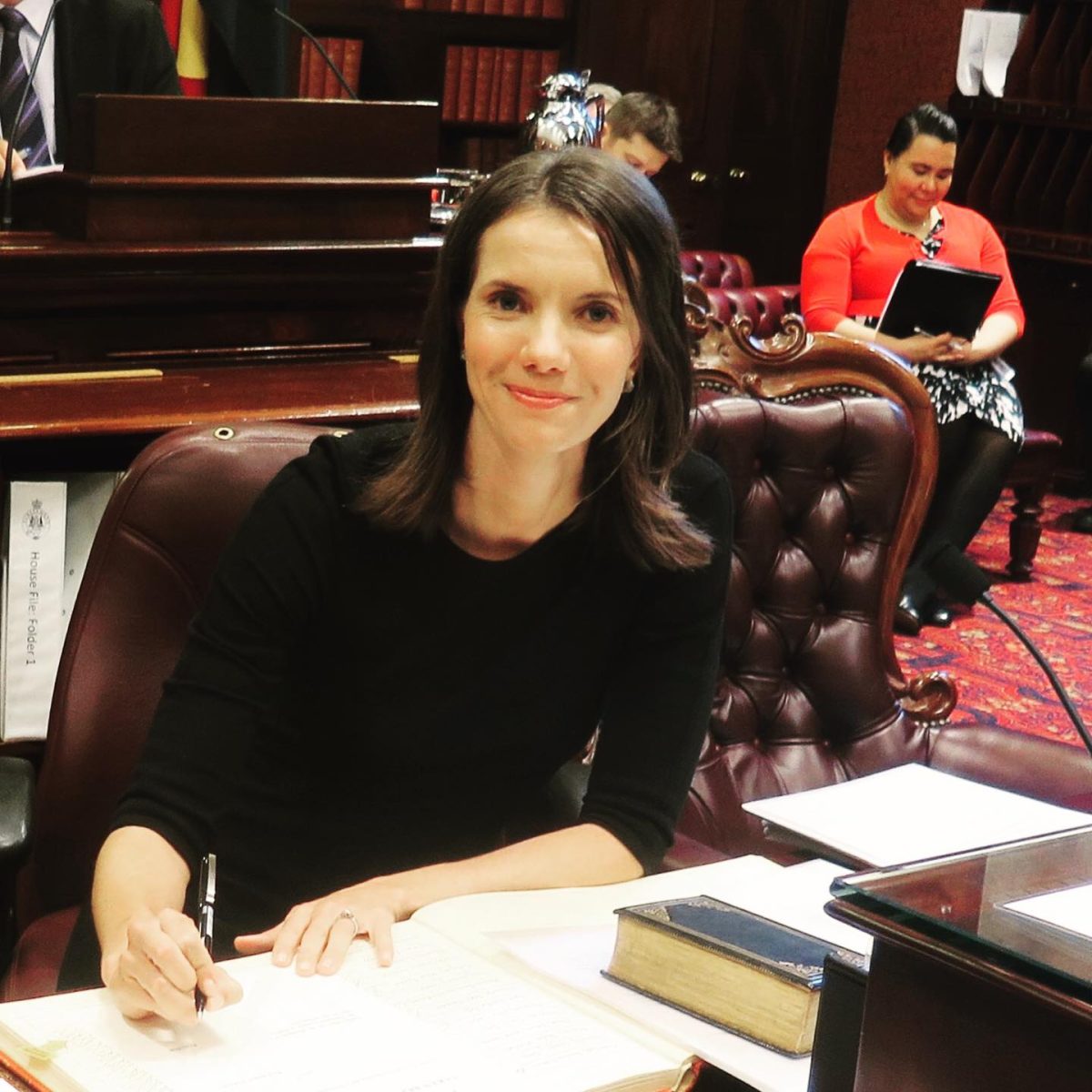
The proposed expansion of Wyangala Dam would have raised the wall by 10 metres. Photo: Visit Cowra.
The biggest and most expensive water infrastructure project in regional NSW – called “vital for ensuring flood mitigation” by supporters and an “expensive brain fart” by an opponent – is officially scrapped.
On Wednesday 13 September, the NSW Labor Government announced it would not proceed with its Coalition predecessor’s $650 million proposal to raise the wall at Wyangala Dam by 10 metres.
Water Minister Rose Jackson cited “millions of dollars in construction costs and the potential catastrophic environmental impacts” as the key reasons for the decision.
“Robust investigations show that while raising the wall by 10 metres is technically feasible, it could cause substantial and irreversible environmental impacts,” she said.
“Hydrological modelling also found raising the wall, with a five-metre flood mitigation zone, was also likely to have devasting impacts on the internationally significant downstream environment, resulting in excessive biodiversity offset costs.
“The other major issue is the billions of dollars to build the dam wall. We have a responsibility to taxpayers to only fund infrastructure projects that provide maximum bang for the buck and, in this case, the capital costs are too high, and the benefits are too low.”

Rose Jackson has put a line through the expansion of Wyangala Dam. Photo: Facebook.
The 1928-built Wyangala Dam, located near Cowra, stores 1200 gigalitres of water to support irrigated agriculture and provide household tap water across the Lachlan Valley – including for towns such as Hillston, Condobolin and Forbes.
In 2019, the NSW Nationals, while in government, pledged to raise the dam wall by 10 metres to increase storage capacity by a further 650 gigalitres.
A number of local irrigators supported the proposal, including Lachlan Valley Water executive officer Mary Ewing.
“Raising the dam wall by 10 metres will provide security for irrigations and towns in droughts as well as flood mitigation,” she said.
Ms Ewing also pointed to the damage wrought by the floods across the Lachlan Valley in October and November 2022.
“If they could have ramped back the release, it would have helped mitigate the flood damage. It wouldn’t have prevented it, but it would have helped manage some of the severe flooding.”
Opponents of the project, such as Booligal farmer Gordon Turner and various environmental groups, claimed it would undermine bird breeding events in the wetlands reliant on the dam spilling. It was also argued the extra water capacity would rarely be used and not provide value for taxpayer dollars, with the Greens NSW tabling secret documents indicating the total cost might have blown out to $2 billion.
Greens MP Cate Faehrmann called the project an “expensive brain fart by the Nationals”.
Minister Jackson agreed the costs were too high, and said she was looking at alternatives to improve water security across the Lachlan Valley.
“While Wyangala is not viable, I recognise the challenges of water security, reliability and flood mitigation for Lachlan communities do not go away. We know there’s a drought knocking on our door threatening the water security of towns across NSW which is why we are reviewing our strategies as a priority.”
The Wyangala Dam expansion would have required co-funding from the Federal Labor Government, who in May decided to axe funding for the National Party’s plan to build a new Dungowan Dam near Tamworth.
Federal Nationals MP Michael McCormack has been scathing of Labor’s unwillingness to fund new dams.
“I am very annoyed this Labor Federal Government has refused to support dam building – this is nothing short of a disgrace,” he told Region in May.
Nationals State MP Steph Cooke, whose electorate of Cootamundra includes Wyangala Dam, was also a strong supporter of raising the wall.
“The Wyangala Dam expansion is vital for ensuring water security and flood mitigation,” she said when in government.
The NSW Government has indicated it will be seeking feedback on how it plans to address these issues in the draft Lachlan Regional Water Strategy, which it says will go on public exhibition before the end of September.
Original Article published by Oliver Jacques on Region Riverina.







